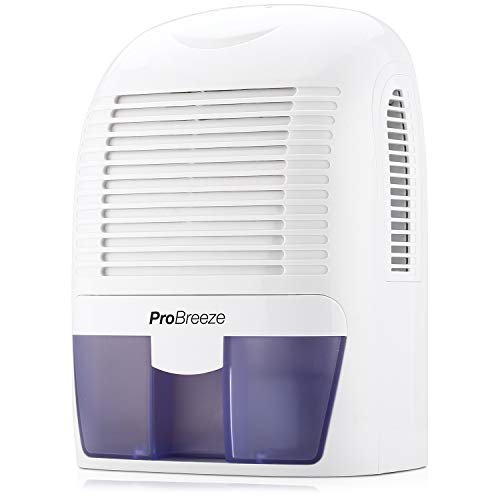Choosing Between A Built-In Humidistat And A Remote Humidistat

What is the difference between a dehumidifier and an air conditioner? If you don't know, you have come to the right place. Both are useful for different situations. And while both are used to lower the level of humidity in the air, they differ in the way that they actually perform the task.
The dehumidifier works to lower the humidity levels in the air. It does this by collecting water that seeps out from the crevices in the room as well as the air. The water is then re-circulated into the water tank where it works to keep the air humid. The dehumidifier is sometimes referred to as a "continual draining" device since it works by continuously draining the water tank in order to keep the room dehumidified.
The pro breeze model, on the other hand, has been designed to provide your home with a greater daily dehumidifying capacity. The pro breeze's compressor is built to handle higher daily dehumidifying capacity than the compressor in the dehumidifier product line. So how does the pro breeze model compare to the original dehumidifier? Let's compare their two capabilities in a little more detail.
The primary difference between the dehumidifier and pro breeze is that the pro breeze's tank holds a much larger volume of water (around three quarts versus just two quarts on the tank of the dehumidifier). This means that there is more water available to the system. The unit is also equipped with an electronic air filter that is larger than the size of the tank. This additional air filter improves the system's ability to remove mold spores, which are known to cause health problems if inhaled.
Another difference is that the pro breeze's compressor is equipped with an ionizer. An ionizer is designed to remove harmful airborne particles, such as mold spores. The ionizer is also equipped with a variable speed fan, which further doubles the dehumidifying capacity of the unit. A final improvement to the unit is the presence of a wet/dry switch, which allows you to turn off the system in the case that you do not need it and the humidity levels in your room are no longer sufficient for the purposes of dehumidifying the space.
Another comparison is the way the dehumidifier works. The pro breeze has what is called a "regenerator", which is essentially a microprocessor that reads the moisture level in the air and adjusts the dehumidifier accordingly. The unit has a built in sensor, which detects moisture and activates the compressor and fan when a dehumidifier is needed. This is similar to what happens with a "regenerative" or "ecologist" type of air conditioner, where the air inside is studied in order to adjust the moisture level and run the dehumidifiers when needed. In this case, however, the moisture level in the air is already pre-determined, so there is no need to go through the process of re-determining the moisture level. Another difference is that the pro breeze does not use any sort of internet or wifi connection, and does not require any batteries, which makes it more economical (as well as giving the homeowner a chance to forget about wires and plugs).
On the other hand, the Meaco Humidifier XLS is powered by a lithium ion battery. This means that it will last longer than the energy saving capacity of its compressor, although it will dehumidify the space quicker than the latter. One great advantage of the Meaco XLS model is that it offers the option to control the fan speed and humidity level, which allows for precise air quality control. If you are interested in saving money, or looking to completely dehumidify an area, then this option is definitely worth considering. However, be aware that the lower rated fan speeds cause a loss of humidity in the house, although they do tend to reach a lower level than the full power versions. This is easily compensated for by running the fan at a lower rate for longer periods of time, which can be achieved by simply adjusting the settings on the remote.
On the other hand, the Meaco Humidistat comes with a built-in humidity sensor, which uses an LED display to indicate the indoor humidity level. The Meaco humidistat also comes with an integrated hygrometer, which is used to gauge the amount of water vapor in the air. If this water vapor measurement is low, then you are most likely experiencing condensation problems in the room, as too much water is in the air. If the reading is high, then you have too much humidity in the air. The humidistat comes with a built-in hygrometer, as well as a temperature probe, which allows for accurate temperature control.




